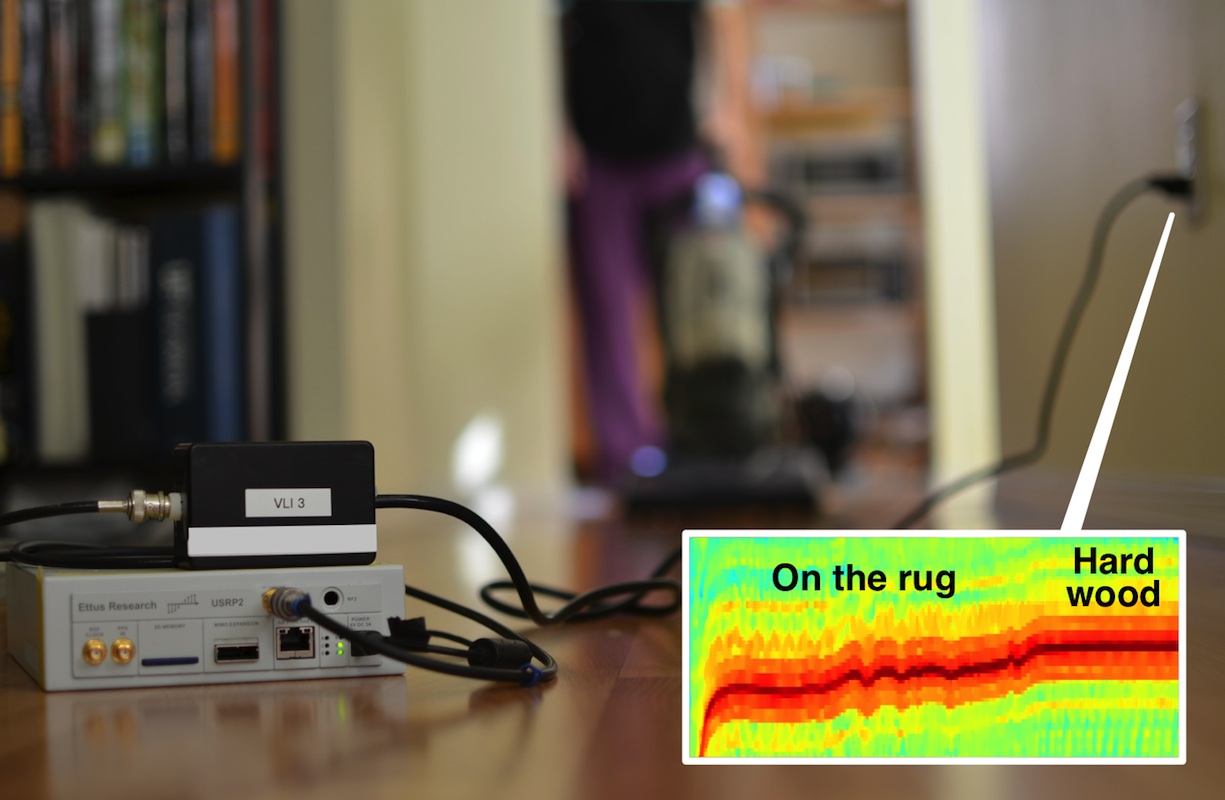@INPROCEEDINGS{7146508,
author={K. Y. Chen and S. Gupta and E. C. Larson and S. Patel},
booktitle={Pervasive Computing and Communications (PerCom), 2015 IEEE International Conference on},
title={DOSE: Detecting user-driven operating states of electronic devices from a single sensing point},
year={2015},
pages={46-54},
keywords={electric sensing devices;electromagnetic interference;microwave ovens;power cables;DOSE;EMI noise;appliance on-off state detection;electronic device;fine-grained electrical characteristic;kitchen appliance sensing;microwave oven sensing;power line;semisupervised model training;single sensing point;time-varying electromagnetic interference;user-driven operating states detection;vacuum cleaner sensing;Commutation;Electromagnetic interference;Home appliances;Noise;Permanent magnet motors;Sensors;Switched-mode power supply},
doi={10.1109/PERCOM.2015.7146508},
month={March},}

